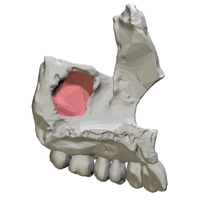
Photo from wikipedia
PURPOSE To report on the etiologies and prognosis of macular hole (MH) in children and to explore the indicators of spontaneous hole closure and poor final visual outcome (vision worse… Click to show full abstract
PURPOSE To report on the etiologies and prognosis of macular hole (MH) in children and to explore the indicators of spontaneous hole closure and poor final visual outcome (vision worse than 20/200). DESIGN Consecutive, retrospective case series. METHODS A consecutive series of patients aged less than 16 years with a full-thickness macular hole treated from 2013 to 2019 in a singer tertiary center was retrospectively reviewed. Data collected from charts included age, sex, best-corrected visual acuity (BCVA), etiology of MH, size of MH, clinical findings, operations, and anatomical and functional outcomes. Logistic regression models were built to establish the predisposing factors. RESULTS Forty eyes of 40 patients were included. Patients were predominantly male with a mean age of 8.3 years. Among the etiologies, trauma prevailed in 29 (72.5%) eyes. Twenty-nine patients underwent surgery and 18 (62.1%) had traumatic MH. All had achieved hole closure. BCVA improved at the final visit. Spontaneous closure was found in 10 (25%) eyes after an average 2 months after trauma. Regression analysis showed that a relatively smaller macular hole (p=0.006) was likely to experience spontaneous closure. Presence of macular lesions (p=0.001) was identified as risk factor for poor final vision. CONCLUSIONS Most pediatric MH was caused by blunt trauma. BCVA improved after MH closed, regardless of surgery or spontaneous closure. Smaller MH secondary to trauma was more likely to experience spontaneous closure with an average time of 2 months. Presence of macular lesions was risk factor for final poor vision.
Journal Title: American journal of ophthalmology
Year Published: 2019
Link to full text (if available)
Share on Social Media: Sign Up to like & get
recommendations!